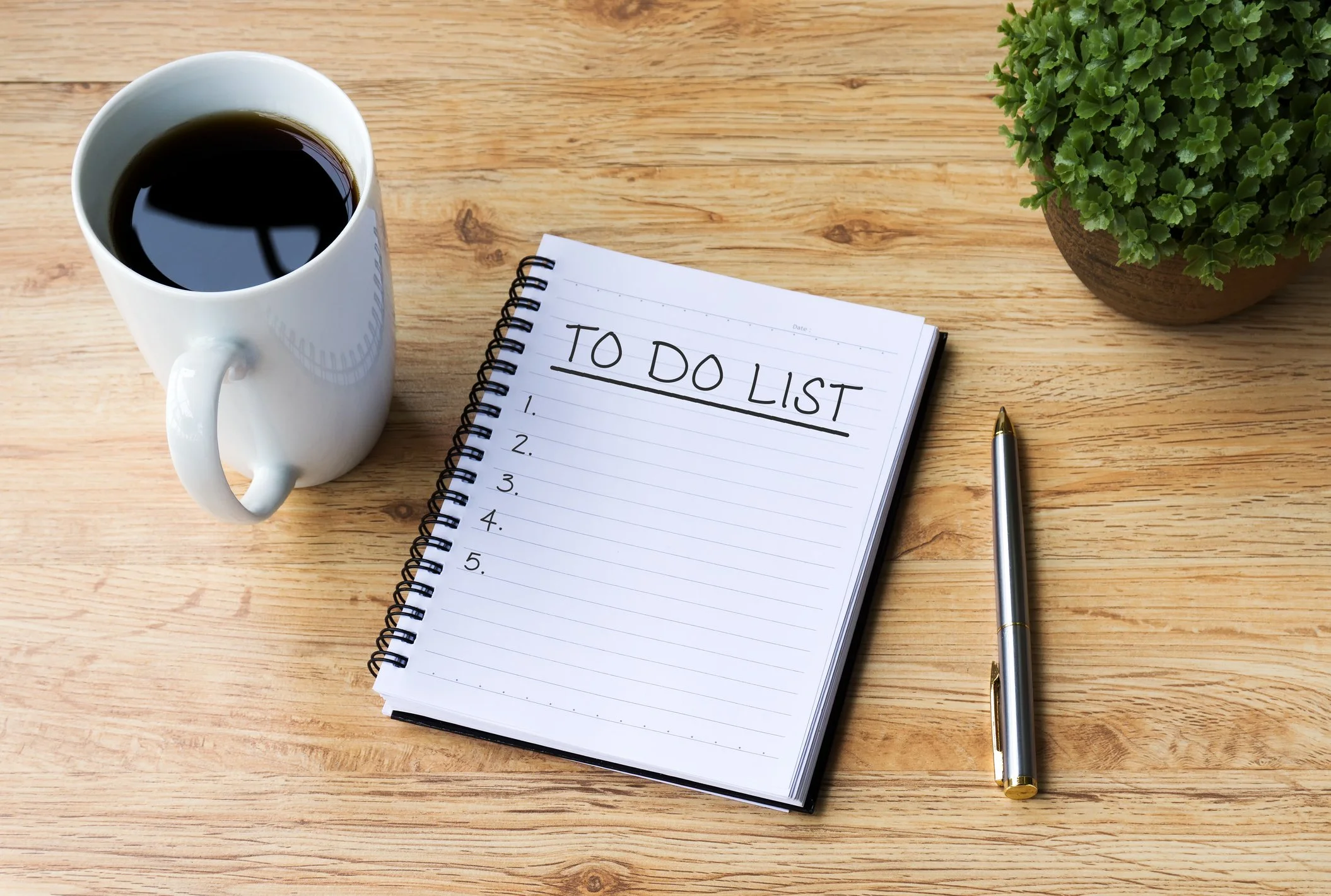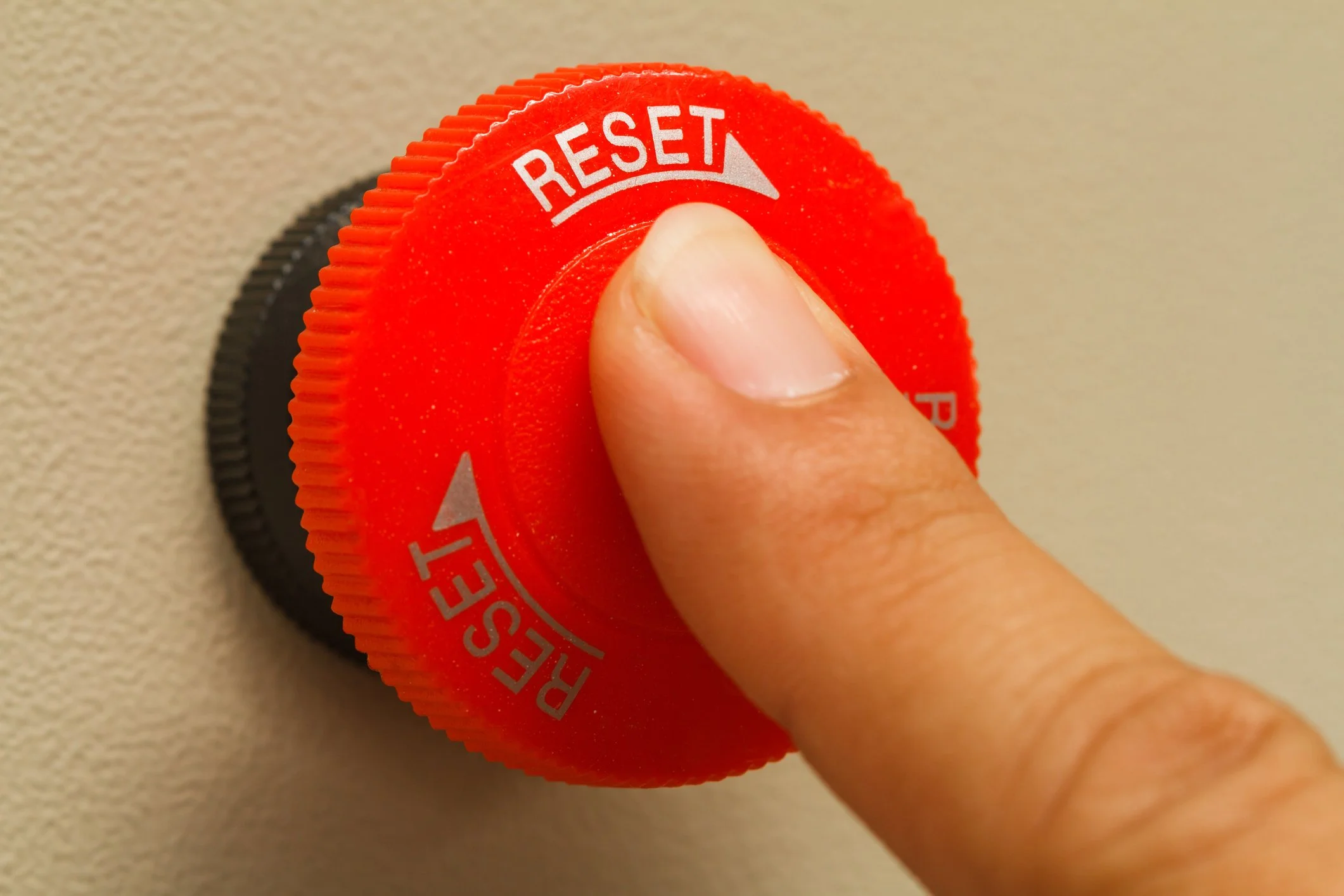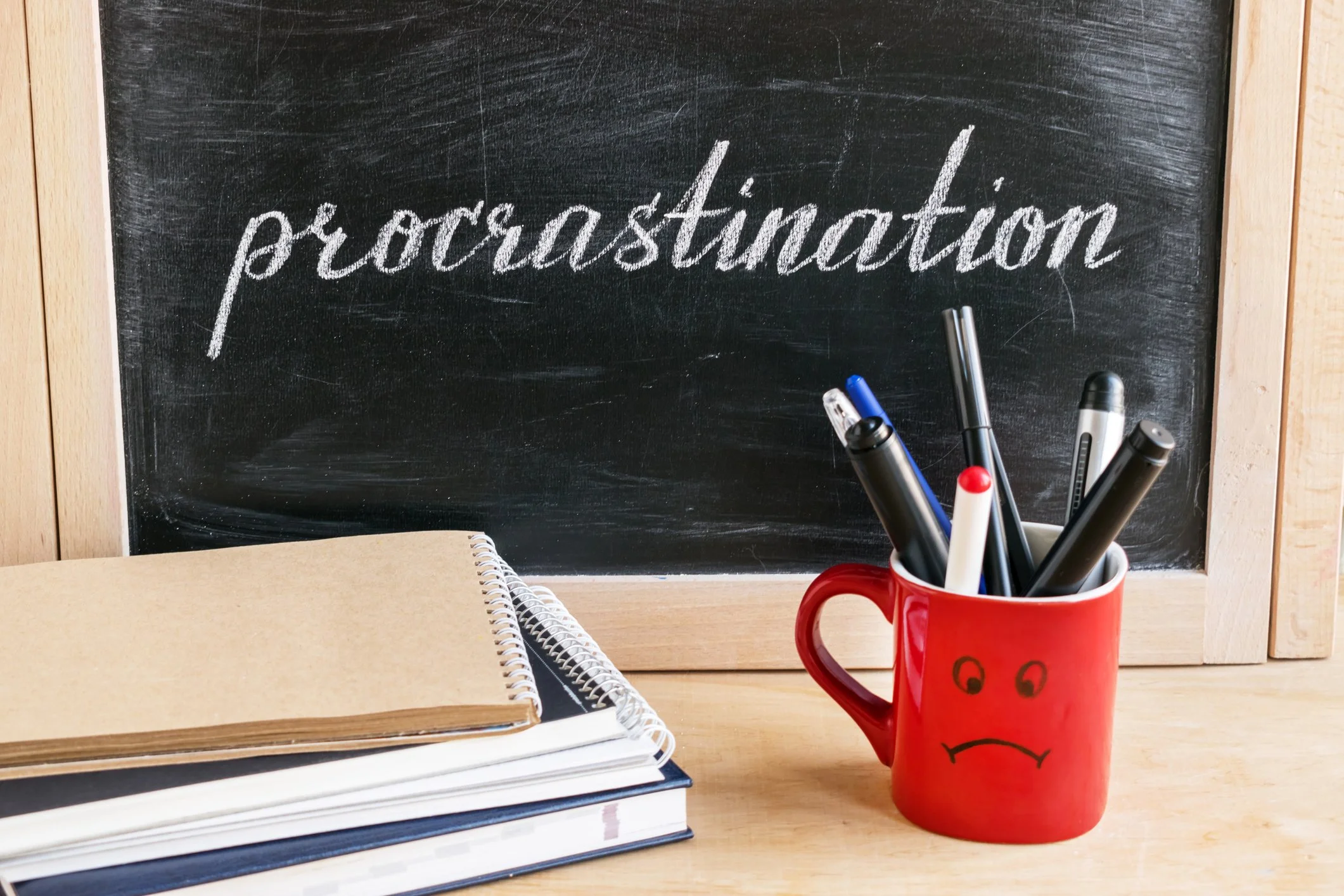January is “Get Organized Month”, an official holiday designated many years ago by the professional organizing industry. It makes total sense because January is the time when we have this urge to take control of our spaces, our schedules, our habits, so that we can achieve whatever other goals we have set for the year.
Happy New Year! Welcome to 2024. I hope you had a chance to relax and recharge even a little bit over the holidays and that you've entered the new year with a renewed sense of energy and enthusiasm and hope.
Ahhh, the holidays. While we fantasize about this season as a warm and rejuvenating time -- the truth is the end of year can be overwhelmingly busy and so packed with pressure that we aren’t able to enjoy ourselves.
With visions of sugar plums dancing in our heads (thanks to the lights and music pumping through stores and holiday fairs, and everyone’s social media posts), we can caught up in trying to live up to the hallmark vision of the holiday season. We can get so stressed over buying the perfect presents, being the perfect host, and cooking the perfect meal that we can’t wait for the holidays to be over.
As we step into this season of gratitude and togetherness, it's understandable if your heart feels heavy given the devastating wars and widespread suffering across the globe. Celebrating abundance and blessings may feel challenging against the backdrop of so much loss, trauma, and destruction experienced by others. Yet, we need ways to fortify our strength, resilience and compassion during difficult times.
Years ago, before the digital revolution, workplaces had a “Keeper of the Files”—let's call her Mable. Mable was like a human version of the cloud, storing and retrieving information quickly and accurately. She would create order in the chaos of paperwork and file folders. But as we continue moving towards paperless offices and the vast internet of everything while still managing printouts, mail, and other physical documents, everyone has to become their own Mable. However, this is no small feat because not everyone is a natural organizer.
I’m often asked, “What do I mean, never check email in the morning? At all?” I’m not against this powerful communication tool, but it’s also highly addictive. Research shows people now spend an average of 19 hours a day on screens. Can you just imagine all the things you could check off your to-do list by cutting down your email time?
The busier our lives get, the harder it can be to find time for fun and hobbies. Of the four kinds of renewal, I describe in my S.E.L.F. Formula, the F /stands for” fun.” We need fun in our lives. It recharges us in a way that nothing else does, just like exercise releases endorphins, fun releases feel-good hormones that fuel our happiness and well-being. It nurtures our souls and energizes us in a way that helps us navigate life’s challenges more easily. Hobbies even make us better at our jobs, according to research published in Harvard Business Review, providing stress reduction, higher energy, and increased levels of creativity.
We've all been there – falling off the exercise wagon and trying to find the motivation to jump back on. When we struggle with jump-starting our exercise routines, we beat ourselves up and experience feelings of disappointment, judgment, and failure, all of which do nothing actually to help solve the problem. So how can we kick-start our exercise routine when we've veered off course?
So you finally made it to bed. You’ve done your bedtime routine and turned off all the lights. You’re exhausted, fully prepared for sleep, but your mind won’t stop racing — overwhelmed with thoughts, feelings, and to-dos. The longer it takes you to fall asleep, the more anxious and stressed out you become, which, in turn, makes it even harder for you to drift off to sleep. Once your head hits the pillow, how do you actually relax into a peaceful slumber so that you receive the full benefit of a restful night?
Check out this week’s blog for a few ways to clear your head and surrender yourself to the pleasures of sleep.
Summer is here, and for many, that means vacation season. Whether you stay local or travel someplace new and exciting, changing your routine and scenery provides a wonderful opportunity to refresh and reset your body, mind, and spirit.
Our hobbies, passions, and the things we do for pure relaxation fuel and restore us physically, emotionally, and even spiritually in the most efficient way imaginable. Renewal activities provide care and nurturance for our souls — providing us with the energy we need to get through everything work and life throws at us. Yet, even though we know that and crave time for renewal, it can be very hard to make it happen.
Let’s talk about the global challenge of back-to-back meetings. In many (dare I say most) companies, back-to-back meetings have become part of the time culture. The last three years of remote work have exacerbated the problem exponentially. How does anyone get any work done? What is the impact on productivity?
Whether it’s paper or digital, there are a few principles I recommend to structure your to-do's so your list becomes approachable. The great unlock is to remember that a to-do is not connected to a when rarely gets done. Each to-do has to get assigned a day or a time. Otherwise, you're just hoping to do it when you remember it or when you have a free moment (which doesn’t ever seem to happen). Instead, with just a few actionable tips, your to-do list can transform into a realistic game plan to get your most important tasks done.
We shouldn’t blindly agree to random requests that will take us away from higher priorities, or are outside our designated lane or expertise (and therefore the most inefficient thing for us to spend time on). In reality, we often want to say no but say yes because we are caught off guard. We get tripped up in an effort to be good team players. There is a way to manage unexpected requests with grace and logic, while also being a great team member.
Instead of giving up on planning altogether, the key is to recognize that not one hundred percent of your day is in your control. The solution is to factor in what I call your Daily Interruption Ratio- what percentage of your day needs to be left open for the inevitable interruptions that really do need to be handled the same day. By factoring in the reality, you can plan your days realistically and avoid having your best laid plans derailed.
What gets in the way? I think it’s that we remember the days when we exercised (or ate well) regularly, and nothing could keep us from staying on plan. The rewards were so powerful and immediate, our motivation was unshakeable at that time. And now, we are waiting for that same feeling to come back to motivate us to go out the door. But when the engine has been cold for a while, it’s hard to summon that feeling.
The reality is, in over 30 years as a time management coach, I’ve never found that procrastination is caused by laziness or irresponsibility. Procrastination is not a personality flaw-there are always specific reasons we get stuck. Getting to the heart of the matter will help you find a solution.
Are you buckling under the weight of an overwhelming workload? If so, you are not alone. We are living in a time of extreme overwork, and studies show that it has created a global crisis of burnout.
So, what do we do? Just buckle down and continue to work extended hours trying to tackle everything flying at us, even if we burn out in the process? Or is there a better way to navigate our extreme workloads?
Research shows that multitasking isn’t really doing multiple things at the same time, it’s actually rapidly switching between tasks. And it turns out that this rapid switching is counter-productive, mentally draining and part of the reason we are so tired at the end of the day.
Since the challenges of disruption and uncertainty are here for the foreseeable future, we have to find ways to restore our energy and motivation while we ride the waves of change. When the world feels out of control, Consider that you don’t have to wait for a vacation, or for the project to be done. Instead a couple of small tweaks today can make a big difference to restoring your ‘mojo’.
The challenge for most people is actually sticking to that time and using it to get the intended project work done. How often have you blocked off time in your schedule to work on the big projects, but when that time rolls around, you find yourself doing anything but the task at hand. Instead, you sit there staring at the screen, migrate over to your email box or slack to get “a few little things done”, decide now is the time to rearrange your pencil drawer, or scroll your news feed one more time–anything to avoid the dreaded task.
What are the biggest time management challenges people face at work today? Back to back meetings. Overwhelming workloads. No time to think. The boundaries between our work and personal lives have disappeared and burnout is rampant.
As the world continues to navigate the biggest disruption to the workplace since the industrial revolution, the question many leaders are asking is: how do we leverage this moment to create a better workplace? One that attracts and retains top talent, creates a space to produce exceptional work, and cultivates wellbeing?
Technology can be a huge boost to productivity, but it can also be a drain. Let's be honest. Our devices take up a lot of our time. Consider how much of that screen time actually nurtures our goals and wellness? Then think about quality time with family and friends and how crucial those relationships are to keeping our work-life balance.
I think I speak for most of us when I say it has been an exhausting past few years. All of us have experienced so much upheaval and uncertainty in both our personal and professional lives that many of us are suffering from burnout. Medical professionals define burnout as a response to prolonged stress that leaves you feeling emotionally and physically drained and exhausted. If you find yourself constantly fatigued, emotionally numb, and unable to keep up with life’s incessant demands, you may be suffering from burnout.
Do you crave time to do your deep thinking work during the work day, and not on nights and weekends? Too often workdays are filled with demands for back to back meetings, dozens of emails, IM’s and slack messages–that our days feel out of our control. Even when you set aside time to think, you are likely to give it away. Yet, investing time in strategic planning, writing, innovation, process improvement, or learning helps us shift from reactive to proactive. And go from working hard, to working smart.
While having a bustling schedule may be a necessary part of your role, it can also leave you in a state of stress. Everyone has had that moment when they struggle to pivot and make schedule arrangements when something inevitably changes for the week. Unfortunately, these sudden changes can leave you in a constant state of anxiety that can impact your work and keep you from focusing during your downtime.
While a hybrid work environment proves beneficial for most people, it still leaves some just a little confused. During the pandemic, more and more companies found hybrid work environments more useful for getting the work done and since then it has become a normal way of working.






























Spring is in the air. On my daily walk in Central Park this morning, it was a thrill to see the variety of Spring flowers blossoming all around….big patches of yellow daffodils and candy striped tulips on the ground below, white cherry blossoms and forsythia on the trees above. Combined with warmer temperatures, brighter sunshine and bluer skies, Spring ushers in a welcome burst of energy and the hope of new possibilities.